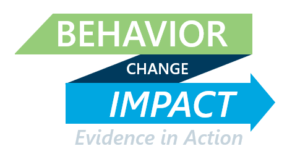Acronyms
ACT: Artemisinin-based Combination Therapy
AIDS: Acquired immune Deficiency Syndrome
AL: Artesunate-Lumifantrine
ANC: Antenatal Care
AOR: Adjusted Odds Ratio
ART: Antiretrovial Therapy
ARV: Antiretroviral
ASAQ: Artesunate-amodiaquine
CHW: Community Health Worker
CI: Confidence Interval
CPR: Contraceptive Prevalence Rate
CQ: Chloroquine
DPMA: Depomedroxyprogesterone Acetate (injectable contraceptive)
EE: Entertainment Education
FP: Family Planning
FSW: Female Sex Worker
HCW: Health Care Worker
HIV: Human Immunodeficiency Virus
HTC: HIV Testing and Counseling
iCCM: Integrated Community Case Management
IEC: Information, Education, and Communication
IPC: Interpersonal Communication
ITN: Insecticide-Treated Net
IUD: Intra-Uterine Device
IPTp: Intermittent Preventive Treatment of Malaria in Pregnancy
IRS: Indoor Residual Spraying
KAP: Knowledge, Attitudes, and Practices
LAM: Lactational Amenorrhea Method
LLIN: Long-lasting Insecticide-treated Net
MSM: Men who have Sex with Men
NGO: Non-governmental Organization
OR: Odds Ratio
PLHIV: People Living with HIV
PMTCT: Prevention of Mother-to-Child Transmission
PrEP: Pre-exposure Prophylaxis
PSA: Public Service Announcement
RCT: Randomized Control Trial
RDT: Rapid Diagnostic Test
RR: Relative Risk
SBC: Social and Behavior Change
SBCC: Social and Behavior Change Communication
SMS: Short Message Service
SP: Sulphadoxine-pyrimethamine
STD: Sexually Transmitted Disease
STI: Sexually Transmitted Infections
TB: Tuberculosis
TFR: Total Fertility Rate
VMMC: Voluntary Medical Male Circumcision
Social and Behavior Change Terms
Advocacy: Includes actions taken at the local or national level to improve laws and norms impacting a community’s environment (e.g., community mobilization, lobbying for policy change, etc.).
Behavioral Economics: Interventions designed to reduce or remove biases and inconsistencies that distort decision-making, such as by correcting information, reframing existing information, streamlining choices, offering incentives or facilitating commitments.
Community Engagement/Mobilization: Includes activities reaching people within common geography, interests or characteristics as well as engaging with community groups. This includes activities that gather large groups and mobilize the community to participate (e.g., concerts, contests). Recognized as a High-Impact Practice.
Faith-Based Communication: Mobilizing faith communities to spread public health messages and lead others toward making healthier decisions.
Health Worker Interventions/Job Aides: Training, exercises, job aides or providing a supportive environment specifically for clinic- or community-based healthcare workers to improve their knowledge, skills and capacity to delivery quality services to their clients.
Interpersonal Counseling: Interpersonal exchange between a trained healthcare worker or provider with a client, group of clients, or couple. May take pace in a healthcare, community or domestic setting. Recognized as a High-Impact Practice.
Mass Media: Includes television, radio, newspaper, magazine, outdoor/transit ads (e.g., billboards, bus ads), and in this database, video, pieces that reach a wide audience. Recognized as a High-Impact Practice.
Mobile/Digital and Social Media: Use of mobile and smart phones for health information and services, including SMS technology. This also includes Internet-based applications encouraging social interaction among people where organizations or individuals create, share and exchange information and ideas among their networks. Platforms include Facebook, YouTube, etc. Recognized as a High-Impact Practice.
Outreach (Peer/Lay Workers): Usually refers to non-clinic-based healthcare workers (e.g., not doctors or nurses themselves), including community health workers, trained volunteers, peers or other groups.
Performance Channels: Includes conveying messages through often live, entertaining media such as street theater/dramas, puppet shows, and music and dance performances.
Point of Sale: Captures communication between pharmacists or other dispensaries and the client.
Print Materials: Primarily paper-based materials that reach intended audiences through written words or illustrations. Examples include flyers, pamphlets/brochures, fact sheets, posters, cards and job aides.
Sex/Life-Skills Education: Refers to delivering information on sexual and reproductive health, including family planning, in a structured manner, usually as part of an in-school curriculum.
Service Referrals: A process of assisting people in obtaining health services through a variety of activities, including, but not limited to, referral cards and vouchers that connect people to providers and support services.
Social Accountability: Refers to the efforts of citizens and civil society to scrutinize and hold duty bearers (politicians, government officials, and service providers) to account for providing promised services, actions that most often take place at the sub-national or community level.
Regions
Source: UNSD
Central Africa
Cameroon
Democratic Republic of Congo
Eastern Africa
Ethiopia
Kenya
Madagascar
Malawi
Rwanda
Tanzania
Uganda
Zambia
Zimbabwe
Northern Africa
Egypt
Sudan
Tunisia
Southern Africa
Botswana
Namibia
South Africa
Western Africa
Burkina Faso
Gabon
Gambia
Ghana
Guinea
Buinea Bissau
Liberia
Mali
Niger
Nigeria
Senegal
Sierra Leone
Togo
South-Eastern Asia
Cambodia
Indonesia
Malaysia
Philippines
Thailand
Southern Asia
Afghanistan
Bangladesh
India
Iran
Nepal
Pakistan
Sri Lanka
Western Asia
Armenia
Jordan
Turkey
Eastern Asia
China
Caribbean
Dominican Republic
St. Lucia
Central America
Costa Rica
El Salvador
Guatemala
Honduras
Nicaragua
Mexico
South America
Brazil
Chile
Colombia
Ecuador
Peru


